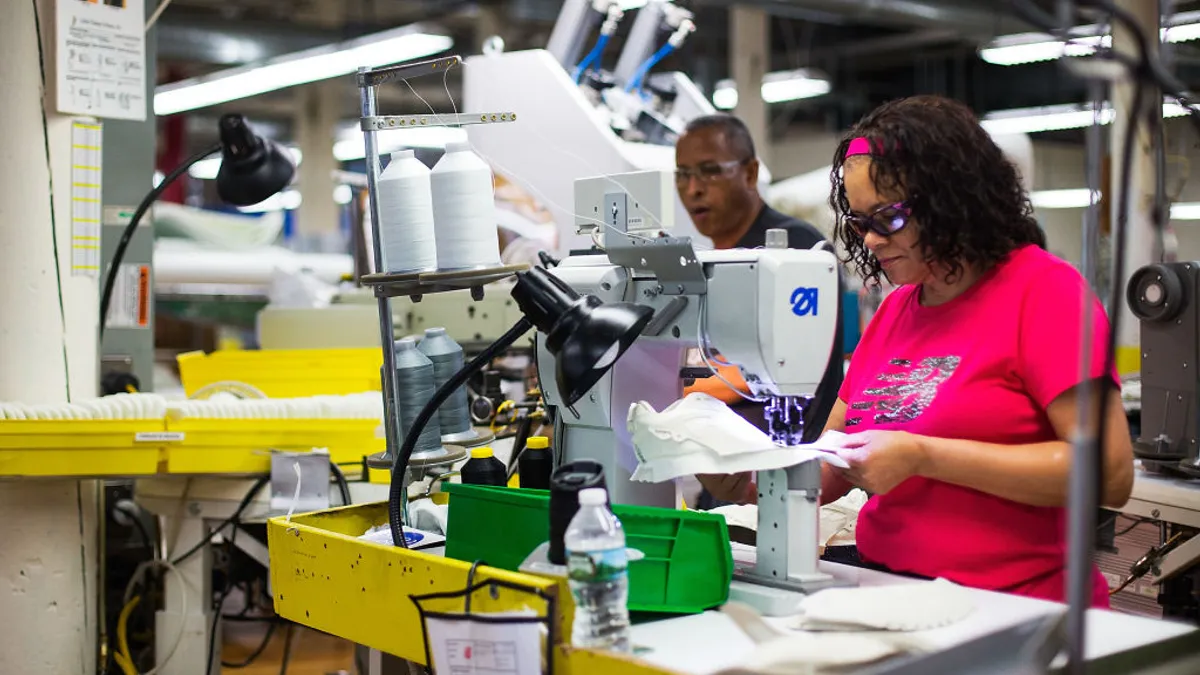Editor’s note: This story is part of a series on the de minimis rule’s supply chain impact and its uncertain future. Read the previous story here.
The de minimis exemption has been a boon for China-based e-commerce giants like Temu and Shein, as well as for air cargo and parcel delivery markets, but how has it impacted U.S. manufacturing?
That depends on who you ask.
Auto parts makers and other complex manufacturers have little exposure to the exemption, as they generally ship products that exceed the $800 threshold for avoiding duties and taxes.
For lower-cost manufacturers like those in the textile space, however, the current threshold poses a competitive risk, as foreign manufacturers can bring cheaper goods into the U.S. while avoiding paying duties.
But with multiple pieces of legislation introduced in the last two years to refine or limit the use of the de minimis exemption, the two sides of the debate are drawing their lines more clearly then ever.
Reform, not eliminate
Although federal data doesn't suggest a strong link between the current $800 threshold and overall manufacturing production, groups like the National Association of Manufacturers are adamant about the exemption's benefits. Such groups specifically cite the exemption’s ability to cut out additional costs and administrative burdens when procuring materials and exporting products.
Overall domestic industrial production has largely pulled even with pre-COVID-19 pandemic levels over the last two years, according to Federal Reserve data. However, the Institute for Supply Management’s most recent PMI data revealed that manufacturing production reached a four-year low in August, continuing sluggishness that has extended throughout the year.
The de minimis threshold increased to $800 in February 2016. At that point, industrial production was in the midst of a small regression, per Federal Reserve data, but it rallied near the end of the year. Aside from a dramatic downturn during the COVID-19 pandemic, production has remained relatively stable since the threshold was raised.
Production has recovered from the COVID-19 pandemic
Some individual sectors have helped buoy manufacturing activity. For example, aside from a pandemic-adjacent slowdown, industrial production for motor vehicles and parts has continued the upward trend it started after the Great Recession.
In a March letter to White House officials, NAM and several other groups, supported the protection and improvement of the current de minimis threshold. One of the primary pillars of the groups’ argument was the desire to maintain U.S. export competitiveness.
“Restricting the use of de minimis treatment in the U.S. would likely trigger changes in the 88 other countries with de minimis policies, increasing costs for American exporters,” the letter said.
Although the groups are against eliminating the de minimis threshold, they are encouraging a refinement to how it is enforced, calling on U.S. Customs and Border Protection to utilize its “clear statutory authority to require additional information [from shippers] to base enforcement decisions.”
De minimis a ‘disaster’ for textiles
Other manufacturers are calling for more aggressive measures against the current exemption.
In March, the Alliance for American Manufacturing partnered with United Steelworkers, the AFL-CIO, the National Council of Textile Organizations, New Balance and others to form the Coalition to Close the De Minimis Loophole.
Coalition members expressed support for The Import Security and Fairness Act — which would outlaw de minimis treatment for shipments from China and Russia — introduced in the Senate and House of Representatives in June 2023.
Further legislative pressure has emerged since then with the introduction of the End China’s De Minimis Abuse Act in April 2024 and the Fighting Illicit Goods, Helping Trustworthy Importers, and Netting Gains for America Act (Fighting for America Act) in August.
Both bills target goods with Section 201, 232 and 301 tariffs attached to them, but the Fighting for America Act goes a step further. It would restrict certain products from being shipped via the de minimis exemption, including textiles, apparel and leather goods.
Beyond legislation, the NCTO and its partners have called for more intensive federal intervention, particularly from the Secretary of the Treasury.
“The Secretary of Treasury has the authority to limit this loophole, to eliminate it, so we're asking the [Biden] administration to contemplate using its authorities to the fullest extent,” said Kim Glas, president and CEO of the NCTO.
Textile manufacturers are particularly eager to eliminate the de minimis exemption. According to Federal Reserve data, U.S. industrial production for textiles has been in a tailspin since the start of the 21st century. The NTCO says the rise of e-commerce since the COVID-19 pandemic and the increased reliance on the de minimis exemption by companies like Temu and Shein is only making things worse.
U.S. textile manufacturing has been trending downward for decades
“The pandemic escalated our wants and needs to shop more online, which is a trajectory that’s going to continue because of the convenience factor,” Glas said. “There’s really no accountability in the de minimis environment, and so this is upended not only the way we shop, how we shop, but it’s also been detrimental to our U.S. manufacturing.”
There were an estimated 1 billion total de minimis shipments in 2023, according to U.S. Customs and Border Protection, up from 685.4 million a year prior and 150 million in 2016. Through Q3 2024, total shipments had already reached 1 billion.
In testimony before the House Committee on Ways and Means last December, Andy Warlick, chairman and CEO of yarn manufacturer Parkdale Mills, said roughly half of de minimis shipments are textile and apparel packages. In addition, according to Glas, the U.S. textile industry has lost 18 manufacturing plants in the last year, primarily due to the flood of de minimis imports coming into the country.
“I would just simply say de minimis has been a disaster for the U.S. textile industry,” Glas told Supply Chain Dive.
Given the usually cheap price of apparel shipments, simply lowering the de minimis threshold or other such reforms will do little to address the issue, according to Glas.
“It’s being exploited in ways that was never envisioned in the 1930s, so if someone asked me if I had a perfect solution, yeah, get rid of de minimis for all e-commerce,” Glas said, whose organization supports the Fighting for America Act introduced in August.
“We're not going to let the perfect be the enemy of the good,” Glas added. “You know, we'd like to see as bold of action that we can get. So we support these lawmakers stepping out saying enough is enough. We have to do something now.”























